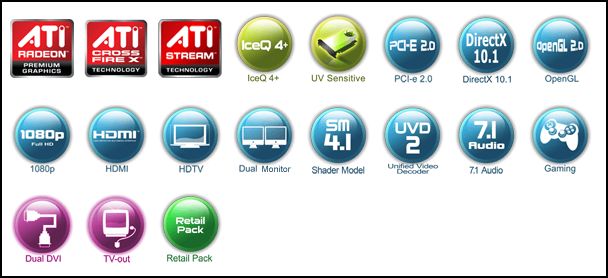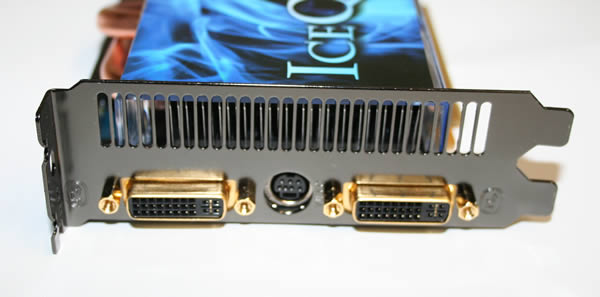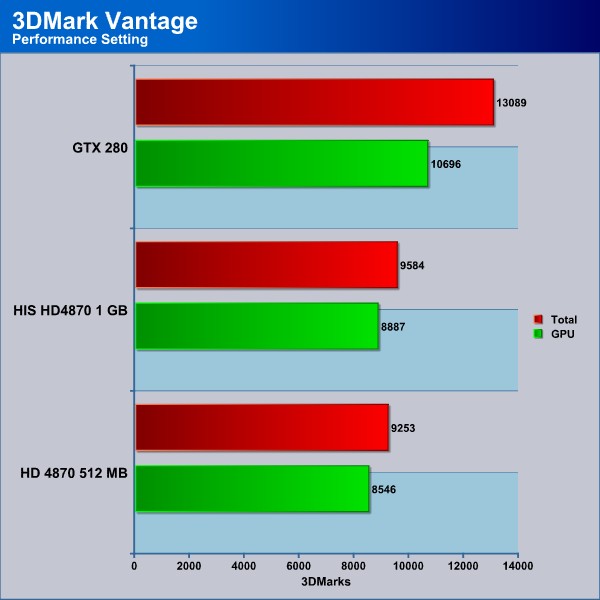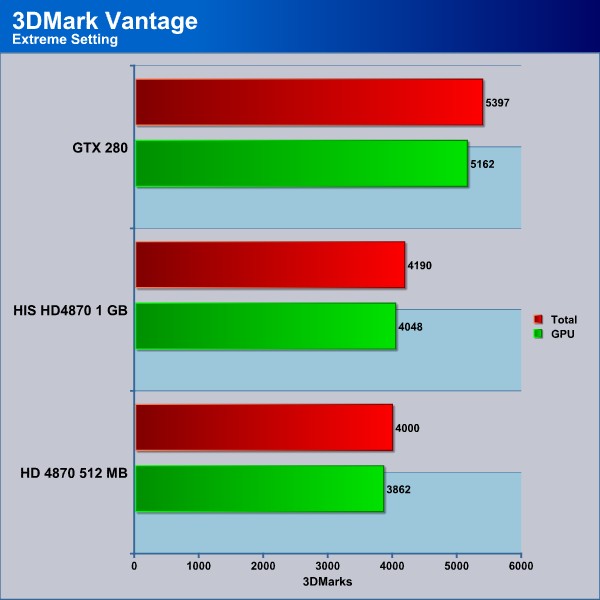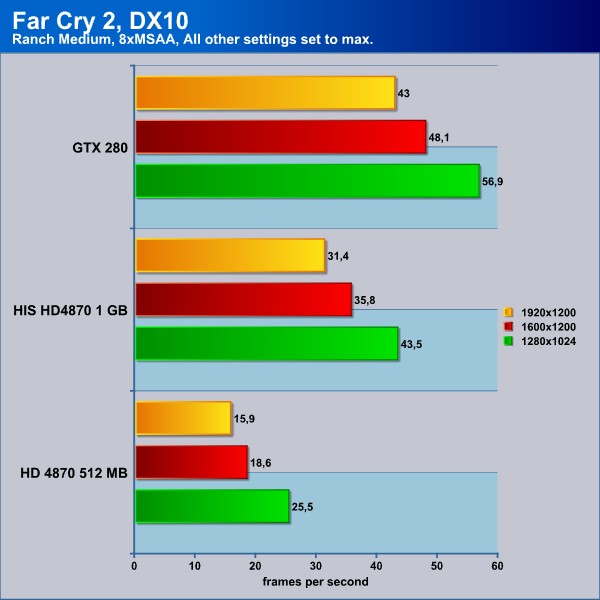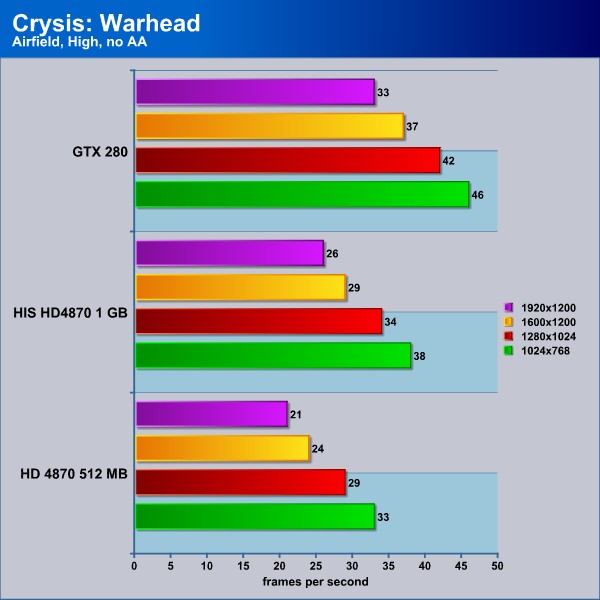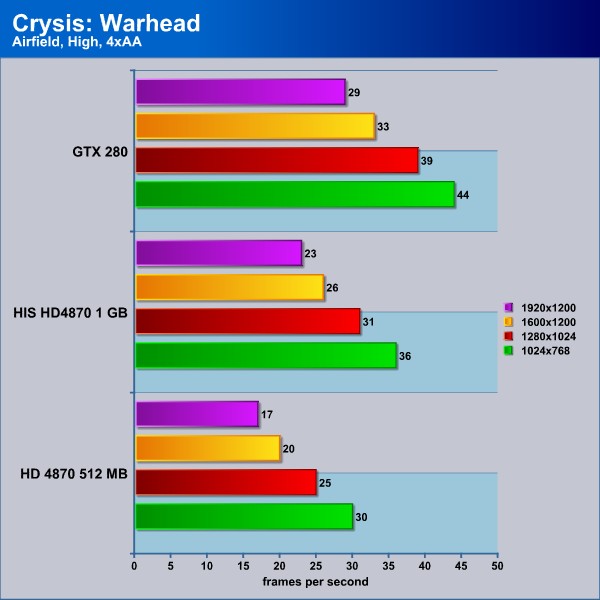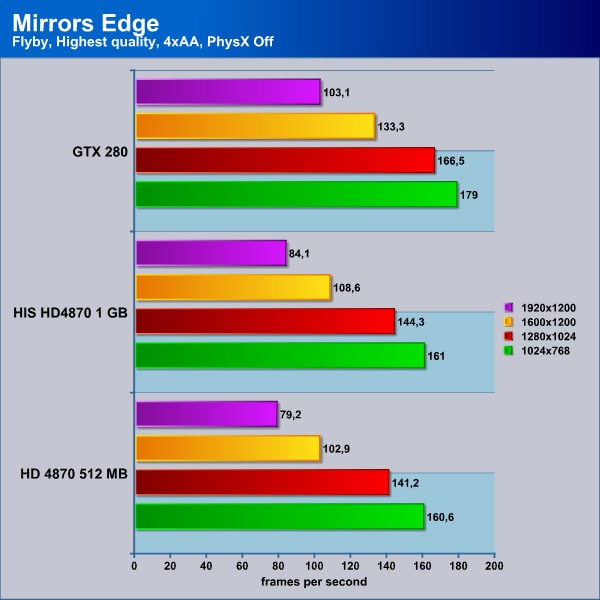Do we really need video cards with 1 GB? We have tested the HIS HD 4870 IceQ 4+ Turbo 1GB and compared it with a regular 512 MB HD4870 to give you the answer to that questions.
INTRODUCTION
“Do I need 1 GB on my video card?” I don’t know how many times I’ve been asked that question the last year or so. Up until pretty recently, my answer has always been “No, you don’t need it.” The reason for this has been the fact that most games have simply not needed a frame buffer more than 512 MB. With the release of DirectX10, faster video cards, games that use higher resolution textures as well as monitors with higher resolutions coming down in price, things have changed.
Late in 2008, AMD released an updated version of the HD4870, with 1 GB instead of 512 MB. Today, we are testing the HIS HD 4870 IceQ 4+ Turbo 1GB to see what benefits we get from the increased memory size. Is it worth the extra dollars or will a 512 MB card still be enough?

ABOUT HIS
HIS has been around since 1987 and has always strived to produce the highest quality graphic cards in the industry. Whether they have succeeded or not are of course up to you buyers but we have reviewed a lot of their products the last few years and almost always been impressed with the quality of their products.
Their headquarters is in Hong Kong but they sell all over the world. They are one of AMD’s Authorized 1st Tier AIB partner.
One of their first big successes was with the Excalibur line of video cards back in 2002. These days they are quite famous for their IceQ, IceQ II and now IceQ 3 series of cards which uses some very nice and quiet coolers on the cards.
FEATURES AND SPECIFICATIONS
The HIS HD 4870 IceQ 4+ Turbo 1GB comes with the successful HD4870 GPU. As this is a Turbo-card, it is clocked a bit higher than a regular HD4870. In addition to the increased clock rate, the card comes with 1 GB of GDDR5-memory.
|
Feature/Specification |
HIS HD 4870 IceQ 4+ Turbo (Full HD 1080p) HDMI 1GB (256bit) GDDR5 Dual DL-DVI & TV (HDCP) PCIe (RoHS) |
|
Chipset
|
Radeon HD 4800 PCIe Series
|
|
ASIC
|
RadeonTM HD 4870 GPU
|
|
Pixel Pipelines
|
800 stream processing units* (Unified)
|
|
Vertex Engines
|
800 stream processing units* (Unified)
|
|
Manu. Process (Micron)
|
55nm
|
|
Transistor
|
956 million
|
|
Memory Size (MB)
|
1024
|
|
Memory Type
|
GDDR5
|
|
RAMDAC (MHz)
|
400
|
|
Engine CLK (MHz)
|
770
|
|
Memory CLK (MHz)
|
4000
|
|
Memory Interface (bit)
|
256
|
When it comes to features it of course comes with the standard features of the HD4870:
- Support for DirectX10.1
- Support for Shader Model 4.1
- UVD2 which also gives 7.1-sound directly out of the HDMI-connector (without any need to hook up an extra cable to the motherboard).
By now most of us are familiar with these features.
HIS however also adds a few of their own features to the card, mainly around the cooling. The card comes with their newest version of the IceQ-cooler, IceQ 4+.
The HIS IceQ 4+ is the 4th generation of the IceQ cooling technology. With newly designed heatpipes and heatsinks, the cooling capacity is said to be increased by up to 60% compared to previous generations of IceQ-coolers. This is done by using thicker spreaders and heatpipes. The heatpipes are 8 mm thick compared to 6 mm on older versions.
The HD 4870 IceQ 4+ Turbo 1GB is also UV-reactive which means it lights up with a nice blue glow when the lights are off.
CLOSER LOOK
The HD 4870 IceQ 4+ Turbo 1GB comes in a nice little black box.
Compared to previous boxes, HIS has managed to make the box more compact, cutting down the size of it. There still is room for improvement though as there still is a lot of unused air in the box. Making the box more compact might not affect the performance, but it is just more environmental friendly (less material needed, more boxes can be transported at the same time and so on).
Even though this is one of their top-of-the-line cards, HIS does not include a lot of stuff with the card. In fact, all we get is:
- The card
- 1 DVI => HDMI adapter
- 1 DVI => VGA adapter
- 1 CrossfireX bridge
- 1 power cable for PCI-E
HIS does not even include their new cool multi-tool that we get with some of their other cards.
The card looks basically like any other HIS video card. The cooler, even if it is a newer version, looks very similar to previous IceQ-coolers.
At the bottom we have separate copper heatsinks for the GPU and the memory. On top of that we have a large heatsink with lots of fins. Heatpipes draw the heat away from the memory and the GPU and the fan at the end blows it out in the back.
The card comes with two DVI-D-connectors, as well as a connector for the component cable. HDMI is handled through a special adapter.
TEST SYSTEM & METHODOLOGY
The video cards were tested in the following system:
|
Feature/Specification |
Videocard1 |
|
CPU
|
Phenom II 940 @ 3.7 GHz
|
|
Motherboard
|
MSI DKA790GX
|
|
Ram
|
4 GB Corsair Dominator DX2-8500C5 DDR2 @ 1066 MHz
|
|
CPU Cooler
|
Noctua NH-C12P
|
|
GPU’s Tested
|
HIS HD4870 512 MB (750 MHz/3600 MHz) HIS HD4870 1 GB (770 MHz/4000 MHz) Leadtek GTX280 |
While we could not include a GTX 260 core 216 in this review (I do not have one at the moment), we have earlier compared them and have seen that the HD4870 1 GB and the GTX 260 Core 216 perform pretty similarly in most games.
Synthetic Benchmarks, Games & Software
|
Synthetic Benchmarks, Games & Software |
|
3DMark Vantage |
|
Crysis Warhead |
|
Far Cry 2 |
|
Mirror’s Edge |
PERFORMANCE – 3DMARK VANTAGE, FAR CRY 2
3DMark Vantage
www.futuremark.com/benchmarks/3dmarkvantage/features/
The newest video benchmark from the gang at Futuremark. This utility is still a synthetic benchmark, but one that more closely reflects real world gaming performance. While it is not a perfect replacement for actual game benchmarks, it has its uses. We tested our cards at the ‘Performance’ setting.
Currently, there is a lot of controversy surrounding NVIDIA’s use of a PhysX driver for its 9800 GTX and GTX 200 series cards, thereby putting the ATI brand at a disadvantage. Whereby installing the PyhsX driver, 3DMark Vantage uses the GPU to perform PhysX calculations during a CPU test, and this is where things get a bit gray. If you look at the Driver Approval Policy for 3DMark Vantage it states; “Based on the specification and design of the CPU tests, GPU make, type or driver version may not have a significant effect on the results of either of the CPU tests as indicated in Section 7.3 of the 3DMark Vantage specification and white paper.”
The HIS HD4870 1 GB performs slightly better than the HIS HD4870 512 MB. The 4-5% difference is probably more due to the slightly faster core and memory clocks than the extra amount of memory.
When we increase the quality level the difference stays around 5%. Again, the difference is more due to the faster core and memory than the extra memory on the card.
Far Cry 2
Far Cry 2 is a game that really loves the extra memory. We set the quality settings very high but that is also the setting we want to play our games in with these cards. As soon as we move to 1600×1200 and higher resolutions, the HIS HD4870 512 MB simply cannot handle the settings.
When we switch over to DX10 the difference becomes even larger. We also notice that the GTX280 gains a lot more frames per second when moving to DX10 than the AMD cards. This is something we have also seen with other NVidia cards like the GTX 260 216 Core.
PERFORMANCE – CRYSIS WARHEAD, MIRROR’S EDGE
Crysis Warhead
Crysis Warhead also seems to benefit from the extra memory. At every resolution, the HD4870 1 GB beats the HIS HD4870 512 MB with 15-25%. That’s a lot more than could be explained by the higher core and memory clock.
The HIS HD4870 1 GB increases its lead over the HIS HD4870 512 MB when we turn on 4xAA. Crysis Warhead is a demanding game and it’s a bit dissapointing that not even the GTX280 manages more frames per second at the higher resolutions. With 4xAA, neither of the AMD-cards really are playable over 1024×768, and this at just the “High” quality setting.
Mirror’s Edge
The game was announced on July 10, 2007, and is powered by the Unreal Engine 3 with the addition of a new lighting solution, developed by Illuminate Labs in association with DICE. The game has a realistic, brightly-colored style and differs from most other first-person perspective video games in allowing for a wider range of actions—such as sliding under barriers, tumbling, wall-running, and shimmying across ledges—and greater freedom of movement, in having no HUD, and in allowing the legs, arms, and torso of the character to be visible on-screen.
The game is set in a society where communication is heavily monitored by a totalitarian regime, and so a network of runners, including the main character, Faith, are used to transmit messages while evading government surveillance.
The game supports PhysX and on NVidia cards the GPU takes care of the PhysX-calculations while with AMD cards it is handled by the CPU. As we are mainly interested in the difference in performance between the HIS HD4870 512 MB and the HIS HD4870 1 GB we turned off PhysX for this review.
The extra memory does nothing for Mirror’s Edge and any difference in performance comes from the increase in core and memory clock.
PERFORMANCE – SUMMARY, TEMPERATURE
Summary
In this chart we have plotted the relative performance difference between the HIS HD4870 512 MB and the HIS HD4870 1 GB. We have set the results for the HIS HD4870 512 MB to 100%. While Mirrors Edge or 3DMark Vantage show little gain from the extra memory, Crysis Warhead and, especially, Far Cry 2 love it.
Temperature
We, of course, also wanted to see what the new IceQ-cooler could do for the temperatures and compared it to the HIS HD4870 512 MB which only has the regular AMD reference cooler. The temperature was measured with the latest version of RivaTuner. We measured both at the Windows Desktop (Idle) and while running 3DMark Vantage with the Xtreme-setting (Under load).
The temperature of the GPU on the HIS HD4870 1 GB was significantly lower than on the HIS HD4870 512 MB with its reference cooler. The memory also was cooled a lot better. In fact, the high memory temperatures measured by RivaTuner on the HIS HD4870 512 MB makes us wonder if RivaTuner is measuring it correctly. At the same time, it did measure a lot lower temperatures on the 1 GB card, so even if the temperatures measured are higher than real, there also is a significant difference in the cooling of the memory.
CONCLUSION
So, what is the verdict when it comes to 1 GB versus 512 MB on a video card? As long as the video card is a fast card, like the HD4870, it clearly is very beneficial to the performance of some games and less benificial in others.
The HIS HD 4870 IceQ 4+ Turbo 1GB costs around $275, while a similar clocked HIS HD4870 512 MB costs around $240, and a slower HIS HD4870 512 MB, like the one we used in this review, costs around $200 (all Newegg prices). This makes the HIS HD4870 1 GB quite pricy. We still feel that the performance boost combined with the excellent cooling more than makes up for the price difference.
We are trying out a new addition to our scoring system to provide additional feedback beyond a flat score. Please note that the final score isn’t an aggregate average of the new rating system.
- Performance 8
- Value 7
- Quality 9
- Features 10
- Innovation 9
Pros
- Fast
- Runs very cool
- Quiet
- Lots of cool features like DX10.1-support, Stream computing, hardware video acceleration of HD-content
Cons
- No bundle to speak of
- A bit pricey compared to the 512 MB version
We give the HIS HD 4870 IceQ 4+ Turbo 1GB a rating of 8.5 paws out of 10 and a Bjorn3d Seal of Approval.
 Bjorn3D.com Bjorn3d.com – Satisfying Your Daily Tech Cravings Since 1996
Bjorn3D.com Bjorn3d.com – Satisfying Your Daily Tech Cravings Since 1996
